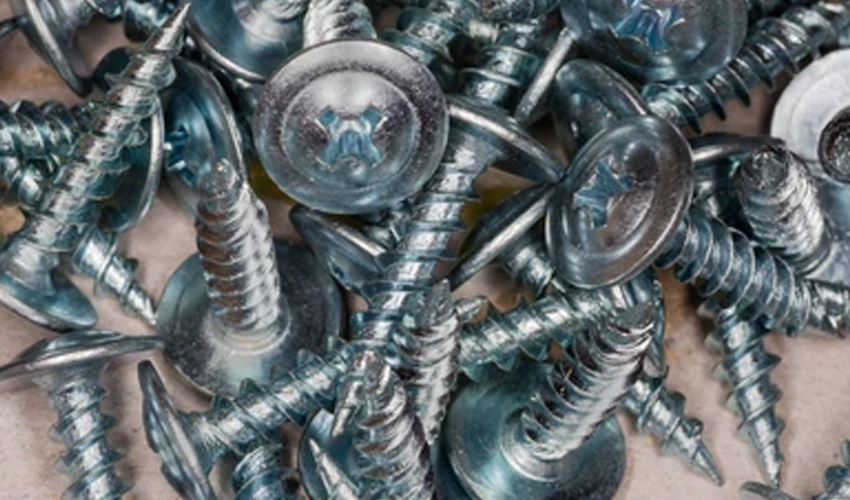Pan Head Screws and Button Head Screws:
A Guide to the Different Screw Head Types

Two of the most common screw head types in use today are pan head screws and button head screws. While these two screw head types may look different, their appearance differs primarily due to manufacturing processes.
Both types of screws are used to fasten things together. Think of the concept of the tongue and groove joining pieces of plywood, or more specifically, attaching the seat on a chair to its legs (or vice versa).
If you know what these screws look like, you can easily identify which type of screw head goes with which type of wood joint — and how best to use it. it.
Are you confused by pan head screws vs. button head screws?
There are two popular styles of screw heads; pan head screws, also called #2, or dual-drive screws (1.41 in), and button head screws (1.67 in). The most obvious difference between these two types of screw heads is their appearance.
Pan head screws have flat tops with no indentation, whereas button head screws have a small dimple at the top. Although both types of screw heads can be used for fastening purposes, there are some specific applications that work best with each type.
Let's take a closer look at pan head screws and button head screws, as well as other screw head types below.
Pan head screws
When it comes to head types, pan heads are among the most common you’ll encounter. Commonly used in furniture (including beds, cabinets, and dressers), electronics, appliances, carpentry projects, and other DIY home improvement projects, pan head screws tend to be large-headed screws with a rounded edge.
These screws are referred to as pan heads because of their resemblance in shape (think frying pans) – although they can also be found in hexagonal shapes.
Button head screws
These screws look similar to pan head screws, but they have a small head on top with a flat surface, which allows you to use a screwdriver. While they are bigger than pan head screws, button head screws are easier to fit into smaller spaces since you can use a small screwdriver.
Many carpenters prefer using these screws because they’re easier to put in place by hand when working on small wood projects. If you’re looking for a way to fix something around your house or repair an item at work, consider using button head screws, as they provide more flexibility in where you can apply them.
Hex socket cap screws
The hex socket cap screw is a simple yet durable mechanism that connects two pieces of metal together. These are commonly used in woodworking projects, as well as construction. In fact, hex head screws have been around for so long that they’re often referred to as wood screws or machine screws. But today, we use them for a wide range of applications.
Tap screw
Also known as a sheet metal screw, these screws have a small head that is usually tapped into a predrilled hole. This type of screw head can be used with soft or hard wood. These types of screws are not as durable when used on thick wood pieces. However, they work well on thin sheets of plywood.
When using tap screws in applications where you need to drive them completely through a piece of wood, it’s important to use washers between your screw and your material. This will prevent stripping out your material as you tighten down your tap screw.
Round head machine screw
A round head machine screw is a fastener with a circular or rounded, domed head on top of a cylindrical shaft. Machine screws are designed for use in threaded holes that are drilled into metal, plastic, or other materials. They can be used as hardware fasteners in electrical enclosures, control panels, home appliances, trucks, and automobiles.
Socket Cap Screw for Plastic
These self-drilling screws are an excellent choice for metal-to-plastic applications. The metal is relatively soft so you won’t strip it out as you drill into plastic. However, this may be the other way around for metals. You wouldn’t want to use a socket cap screw in a metal stud because it would snap easily, especially if you are using drywall anchors with it.
Phillips head countersunk screw
The Phillips head is a type of screw head widely used in consumer electronics. These screws are known as cross-recessed or crosspoint screws and have four or more flutes that form small grooves around a central point on top of the screw head. These grooves help keep fasteners from slipping out while you’re trying to tighten them. This design also makes it easier for users with limited hand strength to use these types of fasteners because they don’t need as much torque as other designs do.
Threaded rod
If you’re in need of a small, inexpensive but strong fastener for something like a picture frame or jewelry box, you might want to consider getting some threaded rod. Threaded rod comes in two varieties, both commonly referred to as machine screws. There are male-threaded machine screws and female-threaded machine screws; they have different uses, but they’re otherwise similar.
In Conclusion
Pan head screws and button head screws for machines are the two most common types of screw heads you’ll encounter in your everyday life, with each type having its own advantages and disadvantages. This guide will help you understand what makes each type of screw head unique, so you can use them both to make the best possible choice for your project!
